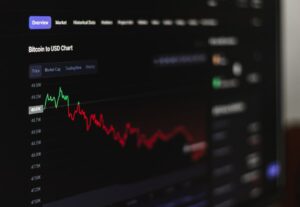Analyzing Wall Street Forex Market Trends and Patterns
The Wall Street Forex Market is known for its fast-paced and dynamic nature. Traders from all around the world participate in this market, hoping to capitalize on the volatility and profit potential it offers. However, to be successful in trading, one must have a solid understanding of market trends and patterns.
Market trends refer to the general direction in which the market is moving. These trends can be categorized into three types: uptrend, downtrend, and sideways (or ranging) market.
In an uptrend, the market is characterized by higher highs and higher lows. This indicates that the buyers are in control, and the price is likely to continue moving higher. Traders can take advantage of this trend by buying at pullbacks or breakouts, with the expectation that the price will continue to rise.
Conversely, in a downtrend, the market is marked by lower highs and lower lows. This suggests that the sellers are in control, and the price is likely to continue moving lower. Traders can profit from this trend by selling at rallies or breakouts, with the expectation that the price will continue to decline.
A sideways market, also known as a ranging market, occurs when the price is moving within a defined range, with no clear direction. In this type of market, traders can look for trading opportunities by buying near the support level and selling near the resistance level. However, it is important to note that trends can change quickly, so traders must be vigilant and adjust their strategies accordingly.
In addition to market trends, traders also analyze patterns to identify potential trading opportunities. These patterns can provide insights into the market sentiment and help predict future price movements. Some commonly used patterns include:
1. Double Top and Double Bottom: These patterns are characterized by two consecutive peaks (in the case of double top) or two consecutive troughs (in the case of double bottom) at approximately the same level. This indicates a potential reversal in the trend.
2. Head and Shoulders: This pattern consists of three peaks, with the middle peak (the head) being higher than the other two (the shoulders). This pattern suggests a potential trend reversal.
3. Flags and Pennants: These patterns are formed when the price consolidates after a strong trending move. Flags are characterized by a rectangular shape, while pennants are triangular. These patterns suggest a continuation of the previous trend.
4. Wedges: Wedges are formed when the price moves within converging trend lines. There are two types of wedges: rising (bullish) and falling (bearish). These patterns suggest a potential reversal in the trend.
To effectively analyze market trends and patterns, traders utilize various technical indicators and tools. These include moving averages, trendlines, Fibonacci retracements, and oscillators such as the Relative Strength Index (RSI) and the Moving Average Convergence Divergence (MACD). These tools can help confirm or invalidate the identified trends and patterns and provide additional signals for entry and exit points.
It is important to note that no analysis or tool can guarantee accurate predictions in the forex market. Market trends and patterns are subject to change, influenced by various economic, political, and social factors. Therefore, traders must continuously update their analysis and adapt their strategies accordingly.
In conclusion, analyzing Wall Street Forex Market trends and patterns is crucial for traders seeking consistent profitability. By understanding market trends and recognizing patterns, traders can identify potential trading opportunities and make informed decisions. However, it is important to remember that analysis is not foolproof, and traders must always exercise caution and implement risk management strategies to protect their capital.













